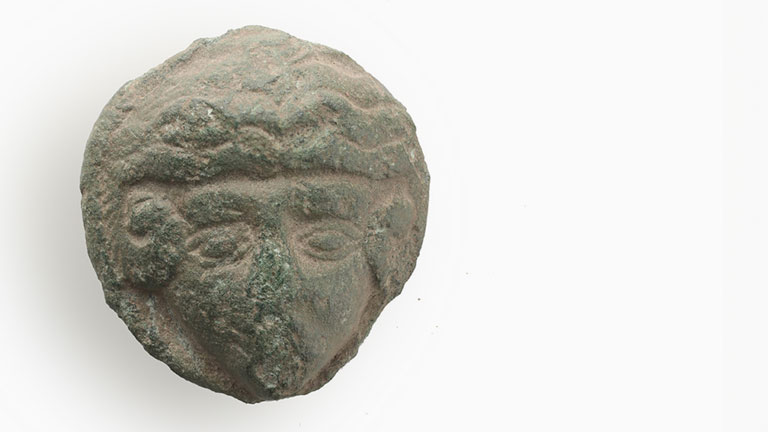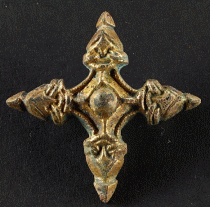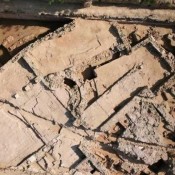The discovery of a bronze fitting near Ringsted with a portrait of Alexander the Great arouses wonder in archaeologist Freerk Oldenburger.
Alexander the Great (356-323 BCE) was the greatest military commander of antiquity, whose empire stretched from Greece to India when he died in Babylon aged just 32. Many hundreds of years after his death, he was still a legend, and he became a great role model for Roman emperors. Especially the tyrannical emperor Caracalla (emperor 198-217 AD) who saw himself as a reincarnation of Alexander the Great. During Caracalla’s reign, a great battle took place at Illerup Ådal near Skanderborg, where two Germanic armies collided. Many lost their lives in the battle, and the swords, bows, arrows, lances and shields left behind were sacrificed to the gods and placed in a lake. The excavation of the lake was able to show shields that were decorated with small decorative discs with portraits of warriors. One of these decorative discs bears a portrait of Alexander the Great, which is identical to the portrait on the newly found mount from Ringsted. The fitting from Illerup is on display at Moesgård Museum.
The function of the bracket
The bronze fitting from Ringsted raises more questions than concrete knowledge and clinical studies can answer.
The archaeologists know: The 26-28 mm diameter (small) fitting is cast in a lead-containing bronze alloy. This represents Alexander the Great, who is easily recognized by the wavy locks of hair and ram’s horns by the ears. It has been found on a field near Ringsted. The fitting is from around the year 200.
The archaeologists do not know for sure what the function of the bracket was. Was it a decorative disc for a shield, or was it a sword (belt) bracket? Was it cast by the Romans, who used the same lead-containing alloy for casting statuettes, was it cast by the Romans from a remelted statuette or did the remelting take place on Zealand? If the bracket was cast by the Romans, how did it end up in a field near Ringsted? What was the meaning of Alexander the Great’s portrait for the Germans who lived in Denmark around the year 200? Did they think the portrait could bring luck on the battlefield?
Freerk Oldenburger has closely studied the fine fittings. When he sees the bracket for the first time, he is very overwhelmed: ”It’s hard to get your arms down in excitement for the small bronze disk that shows that even the smallest archaeological objects can hide absolutely incredible stories.”
He says that it is about a unique find, which hides stories of power, intrigue and murder in the ancient world: ”This is a unique find in Scandinavia with connections to one of the most famous personalities in world history”.





